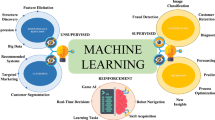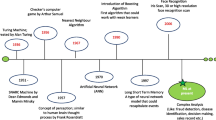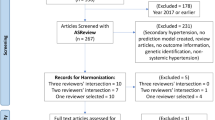Abstract
Polycystic Ovary Syndrome (PCOS) is one of the most widespread endocrine and metabolic disorders affecting women of reproductive age. Major symptoms include hyperandrogenism, polycystic ovary, irregular menstruation cycle, excessive hair growth, etc., which sometimes may lead to more severe complications like infertility, pregnancy complications and other co-morbidities such as diabetes, hypertension, sleep apnea, etc. Early detection and effective management of PCOS are essential to enhance patients' quality of life and reduce the chances of associated health complications. Artificial intelligence (AI) techniques have recently emerged as a popular methodology in the healthcare industry for diagnosing and managing complex diseases such as PCOS. AI utilizes machine learning algorithms to analyze ultrasound images and anthropometric and biochemical test result data to diagnose PCOS quickly and accurately. AI can assist in integrating different data sources, such as patient histories, lab findings, and medical records, to present a clear and complete picture of an individual's health. This information can help the physician make more informed and efficient diagnostic decisions. This review article provides a comprehensive analysis of the evolving role of AI in various aspects of the management of PCOS, with a major focus on AI-based diagnosis tools.
Graphical Abstract



Similar content being viewed by others
Data Availability
Not Applicable.
Code Availability
Not Applicable.
Abbreviations
- Ada Boost:
-
Adaptive Boosting
- AI:
-
Artificial intelligence
- AITAH:
-
Artificial Intelligence for Targeted Analysis of Histology
- AMH:
-
Anti- mullerian hormone
- ANN:
-
Artificial neural network
- BMI:
-
Body Mass Index
- CART:
-
Classification and Regression Trees
- CAT boost:
-
Categorical Boosting
- CD:
-
Cluster of differentiation
- CGSVM:
-
Coarse Gaussian SVM
- CNN:
-
Convolution Neural Network
- CSVM:
-
Cubic SVM
- DL:
-
Deep learning
- DT:
-
Decision Tree
- ER:
-
Endometrial receptivity
- FGSVM:
-
Fine Gaussian SVM
- FN:
-
False Negative
- FP:
-
False Positive
- FSH:
-
Follicle stimulating hormone
- GIST:
-
Global Image Structure tensor
- GLCM:
-
Grey Level Co-Occurrence Matrix
- GLP-1:
-
Glucagon like peptide-1
- IDE:
-
Integrated development environment
- IFFOA-ANN:
-
Improved Fruit Fly Optimization- artificial neural network
- IVF:
-
in vitro Fertilization
- KNN:
-
K-Nearest Neighbor
- LF:
-
Leavy flight
- LH:
-
Luteinizing hormone
- LR:
-
Logistic Regression
- LSVM:
-
Linear SVM
- MGSVM:
-
Medium Gaussian SVM
- ML:
-
Machine learning
- NB:
-
Naïve bayes
- OTSU:
-
Operational Test Support Unit
- PCA:
-
Principal component analysis
- PCOS:
-
Polycystic Ovary Syndrome
- QSVM:
-
Quadratic SVM
- REF:
-
Recursive feature elimination
- RF:
-
Random forest
- SIFT:
-
Scale-Invariant Feature Transform method
- SVM:
-
Support Vector Machine
- TB:
-
Tongue body
- TC:
-
Tongue coating
- TN:
-
True Negative
- TOPSIS:
-
TEchnique for Order of Preference by Similarity to Ideal Solution
- TP:
-
True Positive
- UCI ML:
-
University of California Irvine machine learning repository
- USG:
-
Ultrasonography
- WHO:
-
World Health Organization
- WSI:
-
Whole slide images
- XGBoot:
-
Extreme Gradient Booting
References
Stein IF, Leventhal ML. Amenorrhea associated with bilateral polycystic ovaries. Am J Obstet Gynecol. 1935;29(2):181–91.
Hart R, Hickey M, Franks S. Definitions, prevalence and symptoms of polycystic ovaries and polycystic ovary syndrome. Best Pract Res Clin Obstet Gynaecol. 2004;18(5):671–83.
Escobar-Morreale HF, Luque-Ramírez M, San Millán JL. The molecular-genetic basis of functional hyperandrogenism and the polycystic ovary syndrome. Endocr Rev. 2005;26(2):251–82.
Franks S, Mccarthy MI, Hardy K. Development of polycystic ovary syndrome: involvement of genetic and environmental factors. Int J Androl. 2006;29(1):278–85.
Mukerjee N. Polycystic ovary syndrome (PCOS) symptoms, causes & treatments-a review. Int J Sci Res. 2020;9(7):1949–57.
Karjula S, Morin-Papunen L, Auvinen J, Ruokonen A, Puukka K, Franks S, Järvelin M-R, Tapanainen JS, Jokelainen J, Miettunen J. Psychological distress is more prevalent in fertile age and premenopausal women with PCOS symptoms: 15-year follow-up. J Clin Endocrinol Metab. 2017;102(6):1861–9.
Hoeger KM, Dokras A, Piltonen T. Update on PCOS: consequences, challenges, and guiding treatment. J Clin Endocrinol Metab. 2021;106(3):e1071–83.
Escobar-Morreale HF. Polycystic ovary syndrome: definition, aetiology, diagnosis and treatment. Nat Rev Endocrinol. 2018;14(5):270–84.
Rotterdam E. Revised 2003 consensus on diagnostic criteria and long-term health risks related to polycystic ovary syndrome. Fertil Steril. 2004;81(1):19–25.
Atiomo WU, Pearson S, Shaw S, Prentice A, Dubbins P. Ultrasound criteria in the diagnosis of polycystic ovary syndrome (PCOS). Ultrasound Med Biol. 2000;26(6):977–80.
Agrawal A, Ambad R, Lahoti R, Muley P, Pande P. Role of artificial intelligence in PCOS detection. J Datta Meghe Inst Scie Univ. 2022;17(2):491–4.
Nsugbe E. An artificial intelligence-based decision support system for early diagnosis of polycystic ovaries syndrome. Healthc Analytics. 2023;3:100164.
Anda D, Iyamah E. Comparative analysis of artificial intelligence in the diagnosis of polycystic ovary syndrome. 2022. Available online: https://www.researchgate.net/publication/366320486_Comparative_Analysis_of_Artificial_Intelligence_in_the_Diagnosis_of_Polycystic_Ovary_Syndrome
Zhang K, Aslan AB. AI technologies for education: Recent research & future directions. Comput Edu: Artif Intell. 2021;2:100025.
Gandhi MK, Chaudhari C, Ghosh K. To study the challenges faced in application of artificial intelligence in automobile industry. AIP Conf Proc. 2022;2519(1):030013.
Chowdhury S, Dey P, Joel-Edgar S, Bhattacharya S, Rodriguez-Espindola O, Abadie A, Truong L. Unlocking the value of artificial intelligence in human resource management through AI capability framework. Hum Resour Manag Rev. 2023;33(1):100899.
Cao L. Ai in finance: challenges, techniques, and opportunities. ACM Computing Surveys (CSUR). 2022;55(3):1–38.
Oke SA. A literature review on artificial intelligence. Int J Inf Manage Sci. 2008;19(4):535–70.
Davenport T, Kalakota R. The potential for artificial intelligence in healthcare. Future Healthc J. 2019;6(2):94.
Shaheen MY. Applications of artificial intelligence (AI) in healthcare: a review. ScienceOpen Preprints. 2021. https://doi.org/10.14293/S2199-1006.1.SOR-.PPVRY8K.v1.
Chen Z, Wang Z, Du M, Liu Z. Artificial intelligence in the assessment of female reproductive function using ultrasound: A review. J Ultrasound Med. 2022;41(6):1343–53.
Wang R, Pan W, ** L, Li Y, Geng Y, Gao C, Chen G, Wang H, Ma D, Liao S. Artificial intelligence in reproductive medicine. Reproduction. 2019;158(4):R139–54.
Srinivasa Rao AS, Diamond MP. Deep learning of Markov model-based machines for determination of better treatment option decisions for infertile women. Reprod Sci. 2020;27:763–70.
Cheredath A, Uppangala S, C SA, Jijo A, Kumar P, Joseph D, Ga NG, Kalthur G, Adiga SK. Combining machine learning with metabolomic and embryologic data improves embryo implantation prediction. Reprod Sci. 2023;30(3):984–94.
Nilofer N. Follicles classification to detect polycystic ovary syndrome using GLCM and novel hybrid machine learning. Turk J Comput Math Educ (TURCOMAT). 2021;12(7):1062–73.
Alamoudi A, Khan IU, Aslam N, Alqahtani N, Alsaif HS, Al Dandan O, Al Gadeeb M, Al Bahrani R. A deep learning fusion approach to diagnosis the polycystic ovary syndrome (PCOS). Appl Comput Intell Soft Comput. 2023;2023:1–5.
Elmannai H, El-Rashidy N, Mashal I, Alohali MA, Farag S, El-Sappagh S, Saleh H. polycystic ovary syndrome detection machine learning model based on optimized feature selection and explainable artificial intelligence. Diagnostics. 2023;13(8):1506.
Khanna VV, Chadaga K, Sampathila N, Prabhu S, Bhandage V, Hegde GK. A distinctive explainable machine learning framework for detection of polycystic ovary syndrome. Appl System Innovation. 2023;6(2):32.
Barrera FJ, Brown ED, Rojo A, Obeso J, Plata H, Lincango EP, Terry N, Rodríguez-Gutiérrez R, Hall JE, Shekhar S. Application of machine learning and artificial intelligence in the diagnosis and classification of polycystic ovarian syndrome: a systematic review. Front Endocrinol. 2023;14:1106625.
Suha SA, Islam MN. An extended machine learning technique for polycystic ovary syndrome detection using ovary ultrasound image. Sci Rep. 2022;12(1):17123.
Isah OR, Usman A, Tekanyi A. A review on computer-assisted follicle detection techniques and polycystic ovarian syndrome (PCOS) diagnostic systems. International Journal of Computer Trends and Technology. 2015;28(1). http://repository.futminna.edu.ng:8080/jspui/handle/123456789/7379
Tilly JL. Ovarian follicle counts–not as simple as 1, 2, 3. Reprod Biol Endocrinol. 2003;1:1–4.
Liu S, Wang Y, Yang X, Lei B, Liu L, Li S. Deep learning in medical ultrasound analysis: a review. Engineering. 2019;5:261–75.
Nabilah A, Sigit R, Harsono T, Anwar A. Classification of ovarian cysts on ultrasound images using watershed segmentation and contour analysis. In: 2020 international electronics symposium (IES). 2020. pp. 513–9. https://doi.org/10.1109/IES50839.2020.9231695.
Srivastava S, Kumar P, Chaudhry V, Singh A. Detection of ovarian cyst in ultrasound images using fine-tuned VGG-16 deep learning network. SN Comput Sci. 2020;1:1–8.
Maheswari K, Baranidharan T, Karthik S, Sumathi T. Modelling of F3I based feature selection approach for PCOS classification and prediction. J Ambient Intell Humaniz Comput. 2021;12:1349–62.
Rachana B, Priyanka T, Sahana K, Supritha T, Parameshachari B, Sunitha R. Detection of polycystic ovarian syndrome using follicle recognition technique. Glob Transit Proc. 2021;2(2):304–8.
Gopalakrishnan C, Iyapparaja M. Detection of polycystic ovary syndrome from ultrasound images using SIFT descriptors. Bonfring Int J Softw Eng Soft Comput. 2019;9(2):26–30.
Gopalakrishnan C, Iyapparaja M. Active contour with modified Otsu method for automatic detection of polycystic ovary syndrome from ultrasound image of ovary. Multimed Tools Appl. 2020;79:17169–92.
Gopalakrishnan C, Iyapparaja M. Multilevel thresholding based follicle detection and classification of polycystic ovary syndrome from the ultrasound images using machine learning. Int J Syst Assur Eng Manag. 2021;1–8. https://doi.org/10.1007/s13198-021-01203-x.
Soni P, Vashisht S. Image segmentation for detecting polycystic ovarian disease using deep neural networks. Int J Comput Sci Eng. 2019;7(3):534–7.
Kiruthika V, Sathiya S, Ramya M. Machine learning based ovarian detection in ultrasound images. Int J Adv Mechatronic Syst. 2020;8(2–3):75–85.
Sumathi M, Chitra P, Prabha RS, Srilatha K. Study and detection of PCOS related diseases using CNN. IOP Conf Ser: Mater Sci Eng. 2021;1070:012062 (IOP Publishing).
Dewi R, Adiwijaya, Wisesty U, Jondri. Classification of polycystic ovary based on ultrasound images using competitive neural network. J Phys: Conf Ser. 2018;971:012005 (IOP Publishing).
Cheng JJ, Mahalingaiah S. Data mining polycystic ovary morphology in electronic medical record ultrasound reports. Fertil Res Pract. 2019;5(1):1–7.
Roy DG and Alvi P. Artificial Intelligence in Diagnosis of Polycystic Ovarian Syndrome. In: Sarma HKD, Balas VE, Bhuyan B, Dutta N, editors. Contemporary Issues in Communication, Cloud and Big Data Analytics: Proceedings of CCB 2020. Singapore: Springer, 2020. pp. 453–463.
Hassan MM, Mirza T. Comparative analysis of machine learning algorithms in diagnosis of polycystic ovarian syndrome. Int J Comput Appl. 2020;975:8887.
Tiwari S, Kane L, Koundal D, Jain A, Alhudhaif A, Polat K, Zaguia A, Alenezi F, Althubiti SA. SPOSDS: A smart Polycystic Ovary Syndrome diagnostic system using machine learning. Expert Syst Appl. 2022;203:117592.
Ahmetašević A, Aličelebić L, Bajrić B, Bečić E, Smajović A, Deumić A. Using artificial neural network in diagnosis of polycystic ovary syndrome. In: 2022 11th Mediterranean conference on embedded computing (MECO). 2022. pp. 1–4. https://doi.org/10.1109/MECO55406.2022.9797204.
Bharati S, Podder P, Mondal MRH. Diagnosis of polycystic ovary syndrome using machine learning algorithms. In: 2020 IEEE region 10 symposium (TENSYMP). 2020. pp. 1486–9. https://doi.org/10.1109/TENSYMP50017.2020.9230932.
Chauhan P, Patil P, Rane N, Raundale P, Kanakia H. Comparative analysis of machine learning algorithms for prediction of PCOS. In: 2021 international conference on communication information and computing technology (ICCICT). 2021. pp. 1–7. https://doi.org/10.1109/ICCICT50803.2021.9510128
Mehrotra P, Chatterjee J, Chakraborty C, Ghoshdastidar B, Ghoshdastidar S. Automated screening of polycystic ovary syndrome using machine learning techniques. In: 2011 annual IEEE India conference. 2011. pp. 1–5. https://doi.org/10.1109/INDCON.2011.6139331
Denny A, Raj A, Ashok A, Ram CM, George R. i-HOPE: detection and prediction system for polycystic ovary syndrome (PCOS) using machine learning techniques. In: TENCON 2019–2019 IEEE region 10 conference (TENCON). 2019. pp. 673–8. https://doi.org/10.1109/TENCON.2019.8929674
Zhang X, Liang B, Zhang J, Hao X, Xu X, Chang H-M, Leung PC, Tan J. Raman spectroscopy of follicular fluid and plasma with machine-learning algorithms for polycystic ovary syndrome screening. Mol Cell Endocrinol. 2021;523:111139.
Thakre V, Vedpathak S, Thakre K, Sonawani S. PCOcare: PCOS detection and prediction using machine learning algorithms. Biosci Biotechnol Res Commun. 2020;13(14):240–4.
Kangasniemi MH, Komsi EK, Rossi H-R, Liakka A, Khatun M, Chen JC, Paulson M, Hirschberg AL, Arffman RK, Piltonen TT. Artificial intelligence deep learning model assessment of leukocyte counts and proliferation in endometrium from women with and without polycystic ovary syndrome. FS Sci. 2022;3(2):174–86.
Zhang X, Xu Y, Fu L, Li D, Dai X, Liu L, Zhang J, Zheng L, Cui M. Identification of mRNAs related to endometrium function regulated by lncRNA CD36–005 in rat endometrial stromal cells. Reprod Biol Endocrinol. 2018;16(1):1–11.
Shang K, Jia X, Qiao J, Kang J, Guan Y. Endometrial abnormality in women with polycystic ovary syndrome. Reprod Sci. 2012;19(7):674–83.
Barry JA, Azizia MM, Hardiman PJ. Risk of endometrial, ovarian and breast cancer in women with polycystic ovary syndrome: a systematic review and meta-analysis. Hum Reprod Update. 2014;20(5):748–58.
Palomba S, De Wilde MA, Falbo A, Koster MP, La Sala GB, Fauser BC. Pregnancy complications in women with polycystic ovary syndrome. Hum Reprod Update. 2015;21(5):575–92.
Piltonen TT. Polycystic ovary syndrome: endometrial markers. Best Pract Res Clin Obstet Gynaecol. 2016;37:66–79.
Lee S, Arffman R, Komsi E, Lindgren O, Kemppainen J, Metsola H, Ahtikoski A, Kask K, Saare M, Salumets A. P-625 Artificial intelligence-enabled analysis of endometrial CD138 positive plasma cells in infertility-associated conditions; Polycystic ovary syndrome (PCOS) and recurrent implantation failure (RIF). Human Reproduction. 2023;38((Supplement_1)):dead093-953.
Sivajohan B, Elgendi M, Menon C, Allaire C, Yong P, Bedaiwy MA. Clinical use of artificial intelligence in endometriosis: a sco** review. NPJ Digital Medicine. 2022;5(1):109.
Downing MJ, Papke DJ Jr, Tyekucheva S, Mutter GL. A new classification of benign, premalignant, and malignant endometrial tissues using machine learning applied to 1413 candidate variables. Int J Gynecol Pathol: Off J Int Soc Gynecol Pathol. 2020;39(4):333.
Papke DJ Jr, Lohmann S, Downing M, Hufnagl P, Mutter GL. Computational augmentation of neoplastic endometrial glands in digital pathology displays. J Pathol. 2021;253(3):258–67.
Wang W, Zeng W, He S, Shi Y, Chen X, Tu L, Yang B, Xu J, Yin X. A new model for predicting the occurrence of polycystic ovary syndrome: Based on data of tongue and pulse. Digital Health. 2023;9:20552076231160324.
Lv W, Song Y, Fu R, Lin X, Su Y, ** X, Yang H, Shan X, Du W, Huang Q. Deep learning algorithm for automated detection of polycystic ovary syndrome using scleral images. Front Endocrinol. 2022;12:789878.
Kodipalli A, Devi S. Prediction of PCOS and mental health using fuzzy inference and SVM. Front Public Health. 2021;9:789569.
Kaur R, Kumar R, Gupta M. Predicting risk of obesity and meal planning to reduce the obese in adulthood using artificial intelligence. Endocrine. 2022;78(3):458–69.
LaValley MP. Logistic regression. Circulation. 2008;117(18):2395–9.
Song Y-Y, Ying L. Decision tree methods: applications for classification and prediction. Shanghai Arch Psychiatry. 2015;27(2):130.
Suthaharan S. Support vector machine. In: Machine learning models and algorithms for big data classification: thinking with examples for effective learning. Integrated Series in Information Systems, vol 36. Boston: Springer: 2016. pp. 207–235.
Webb GI, Keogh E, Miikkulainen R. Naïve Bayes. Encycl Mach Learn. 2010;15(1):713–4.
Rigatti SJ. Random forest. J Insur Med. 2017;47(1):31–9.
Inan MSK, Ulfath RE, Alam FI, Bappee FK, Hasan R. Improved sampling and feature selection to support extreme gradient boosting for PCOS diagnosis. In: 2021 IEEE 11th annual computing and communication workshop and conference (CCWC). 2021. pp. 1046–50. https://doi.org/10.1109/CCWC51732.2021.9375994.
Chen T, He T, Benesty M, Khotilovich V, Tang Y, Cho H, Chen K, Mitchell R, Cano I, Zhou T. Xgboost: extreme gradient boosting. R Packag Vers. 2015;1(4):1–4.
Jabeen A, Yamini V, Amberina AR, Eshwar MD, Vadakedath S, Begum GS, Kandi V. Polycystic ovarian syndrome: prevalence, predisposing factors, and awareness among adolescent and young girls of South India. Cureus. 2022;14(8). https://doi.org/10.7759/cureus.27943.
Verma P, Kushwaha H, Singh H. Artificial Intelligence in Healthcare: Inherent Biases and Concerns. In: Artificial Intelligence and Machine Learning in Healthcare. Springer; 2023. p. 179–87.
Amann J, Blasimme A, Vayena E, Frey D, Madai VI; Precise4Q Consortium. Explainability for artificial intelligence in healthcare: A multidisciplinary perspective. BMC Med Informa Decis Making. 2020;20(1):310.
Acknowledgements
NA.
Funding
Not Applicable.
Author information
Authors and Affiliations
Corresponding author
Ethics declarations
Ethics Approval
Not Applicable.
Consent to Participate
Not Applicable.
Consent for Publication
Not Applicable.
Conflict of Interest
There are no conflicts of interest.
Additional information
Publisher's Note
Springer Nature remains neutral with regard to jurisdictional claims in published maps and institutional affiliations.
Rights and permissions
Springer Nature or its licensor (e.g. a society or other partner) holds exclusive rights to this article under a publishing agreement with the author(s) or other rightsholder(s); author self-archiving of the accepted manuscript version of this article is solely governed by the terms of such publishing agreement and applicable law.
About this article
Cite this article
Verma, P., Maan, P., Gautam, R. et al. Unveiling the Role of Artificial Intelligence (AI) in Polycystic Ovary Syndrome (PCOS) Diagnosis: A Comprehensive Review. Reprod. Sci. (2024). https://doi.org/10.1007/s43032-024-01615-7
Received:
Accepted:
Published:
DOI: https://doi.org/10.1007/s43032-024-01615-7




